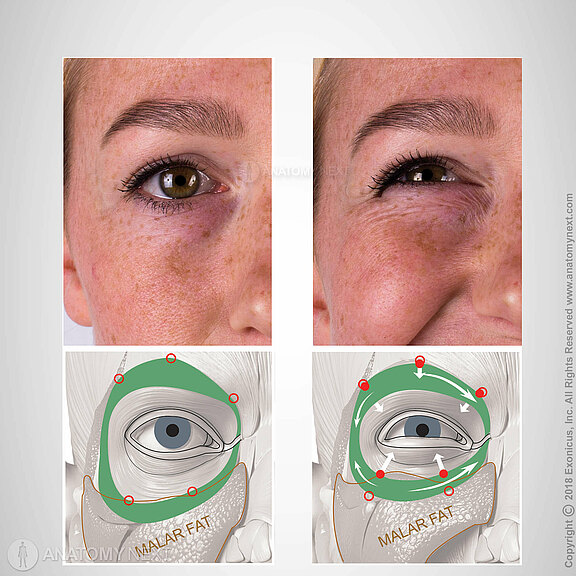If the orbicularis oculi muscle (eye ring muscle) is also affected, this has severe consequences for the patient, as complete closure of the eyelid is no longer possible. However, the blinking reflex (facial nerve -> physiology) is necessary to adequately protect the eye. Due to the lack of wetting with tear fluid, the cornea can also dry out, which can cause permanent damage to vision[1]. Another unpleasant consequence can be recurrent conjunctivitis. With regard to the eyelids, the loss of tone of the orbicularis oculi muscle leads, especially in older patients, to an opening of the lower (paralytic ectropion) and upper eyelids (Floppy eyelid syndrome)[2]. This also promotes conjunctivitis and corneal damage. The laxity of the eyelids can, with an intact lacrimal gland, lead to an undirected flow of tears, with the tear fluid dripping down at the outer corner of the eye.
If facial paralysis occurs, the eye must therefore be protected immediately. In the acute phase, eye drops and watch glass bandages are initiated. If the paresis persists longer, operations (explained in other sections) are necessary to protect the eye as best as possible[3].
sources:
[1] McMonnies CW. Incomplete blinking: exposure keratopathy, lid wiper epitheliopathy, dry eye, refractive surgery, and dry contact lenses. Cont Lens Anterior Eye 2007; 30(1):37–51.
[2] Culbertson WW, Ostler HB. The floppy eyelid syndrome. Am J Ophthalmol 1981; 92(4):568–75.
[3] Terzis JK, Karypidis D. Blink restoration in adult facial paralysis. Plast Reconstr Surg 2010; 126(1):126–39.
